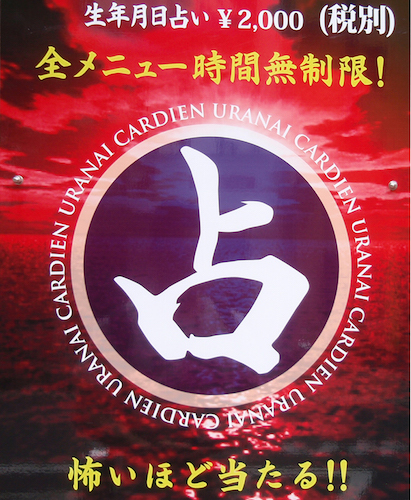25. The "Katakana To" Radical: 卜
In kanji such as 赴 (1751: to head to) and 訃 (2102: news of a death), radical 25 keeps its 卜 shape to a tee, so you might expect 卜 to be on duty there. But other radicals serve that function in those two characters, and our two-stroke 卜 is a mere component. Meanwhile, the "katakana to" radical is on duty in the following kanji:
占 (1491: to possess; occupy; fortune telling)
Atop the box in 占, radical 25 appears in a variant form, not as 卜! That's unexpected because 占 is the only Joyo kanji classified under radical 25!
The Names of Radical 25
The 卜 radical also functions as a non-Joyo kanji that has these readings and definitions:
卜する (ぼくする: to tell someone's fortune; forecast; predict; divine)
占う or 卜う (うらなう: to tell someone's fortune; forecast; predict; divine)
The two words are synonyms, though 卜する sounds much more archaic and literary.
From the yomi of those verbs we can understand the following names of the ト radical:
ぼくのと
ぼく
うらない
In ぼくのと, the と refers to ト, the katakana read as to.
As for English names, we can call radical 25 not only "katakana to" but also the "divining rod" or "divination" radical.
How 占 and卜 Relate to Each Other
On seeing 占う and 卜う as alternate renderings of うらなう, I mistook the 卜 character for a variant form of the 占 kanji. No, 占 can carry the Joyo yomi し•める, whereas one can't read 卜 that way.
The two kanji meet up in a word that no one uses today:
占卜 (せんぼく: fortune telling)

Photo Credit: Eve Kushner
I like the size of 占 on this sign for a fortune teller in the Shinjuku section of Tokyo. Despite the lack of okurigana, we should read the 占 as 占い (うらない: fortune telling).
What ト Means Etymologically
According to Henshall's newer edition, the ト component in 外 (91: outside), 掛 (1083: to hang), 占, and 赴 (1751: to head to) represents “divining” or “divination.”
In his etymologies of 外 and 占, Henshall says the ト signifies divination as practiced in ancient China. The shape symbolizes cracks in the surface of a turtle shell, cow scapula, and the like.
As for 訃 (2102: news of a death), he proposes that the 卜 acts phonetically to contribute the associated sense “hurry.” He also notes that the character shape was initially 赴, which meant “to run and announce someone’s death,” at least as one scholar views it. Eventually, the Chinese created 訃 to represent that sense, making 赴 mean “to proceed to” (or "to head to," as Joy o’ Kanji defines it).
The Shape of 卜
Just to be sure I've crossed every t and dotted each i, so to speak, I'll point out that the rightmost component in 外 looks a bit different. That is, the diagonal crosses the vertical stroke and protrudes on the other side. At least that's true in the typed font I'm seeing as I write this. Handwritten versions of the kanji differ again, containing no crossed line.
